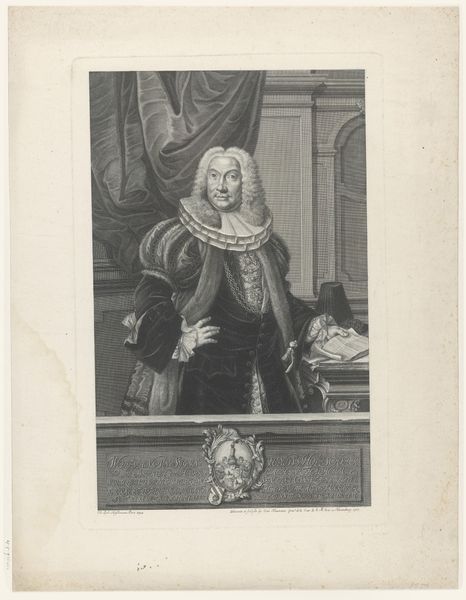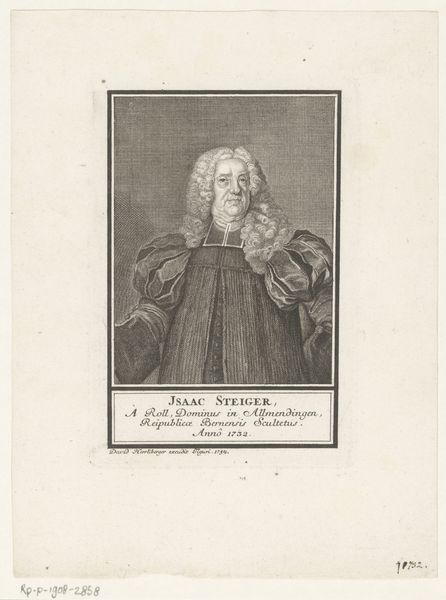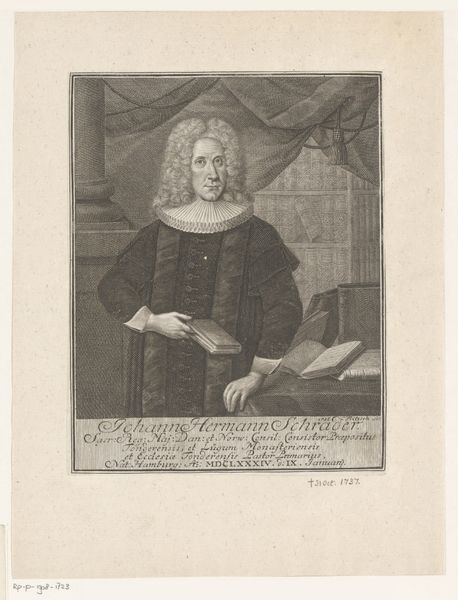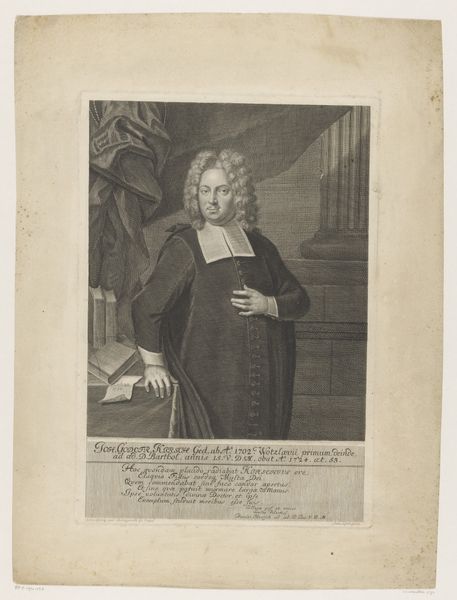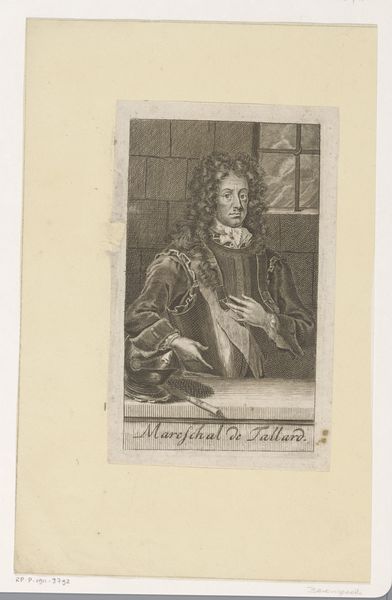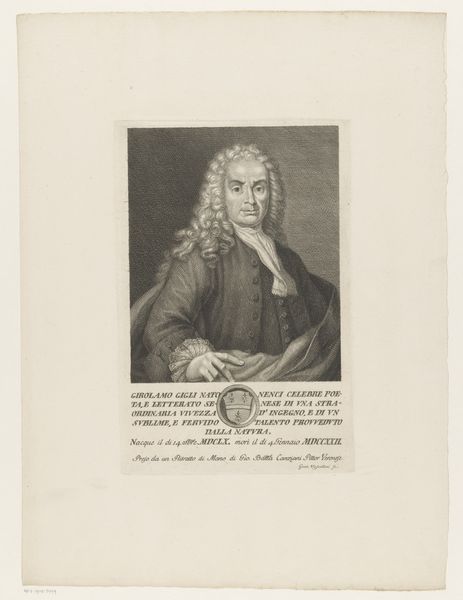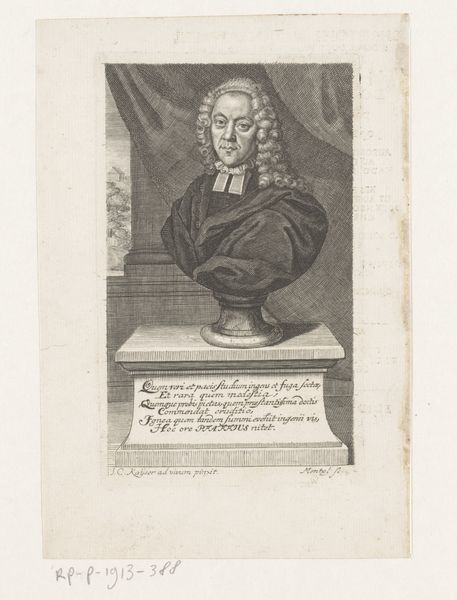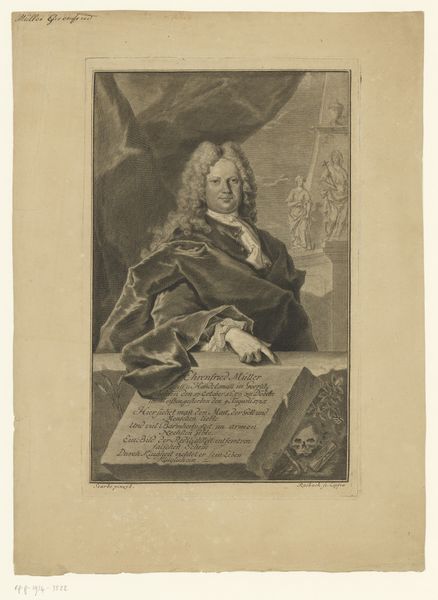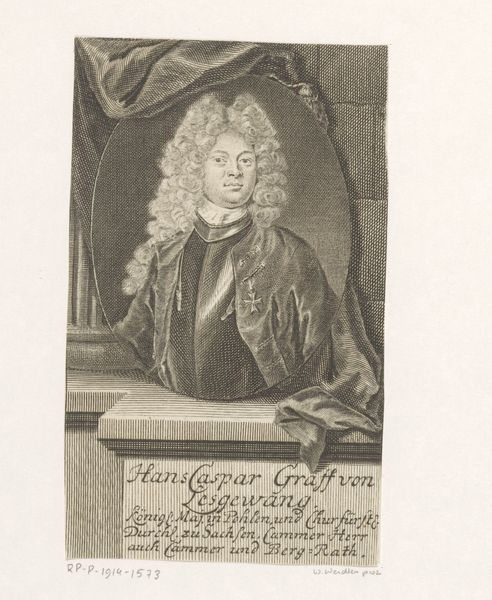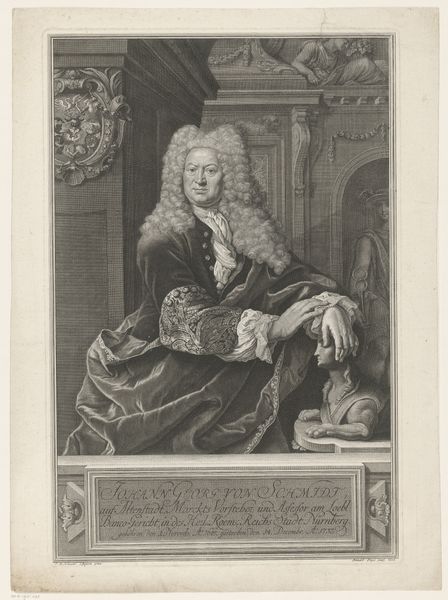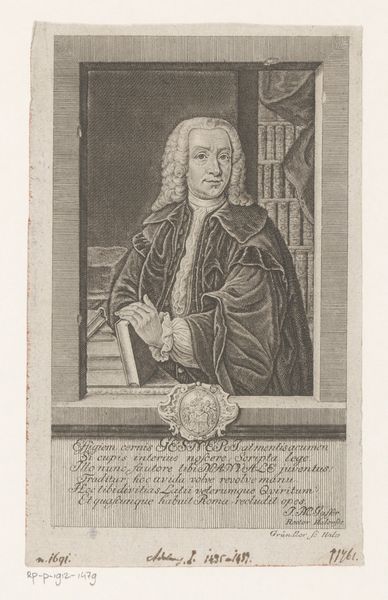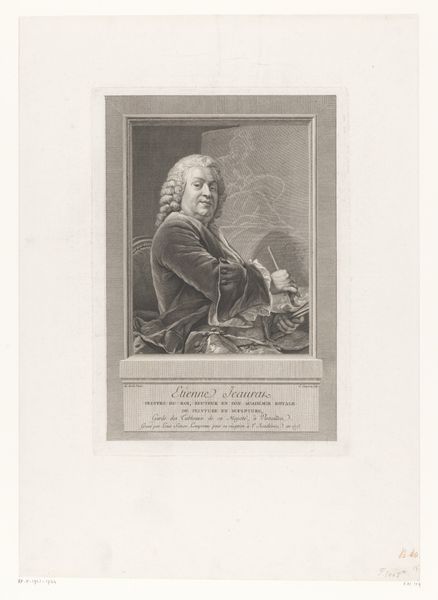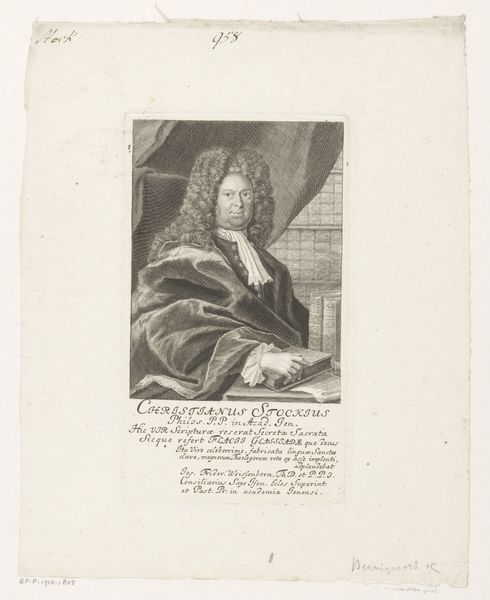
engraving
#
baroque
#
history-painting
#
engraving
Dimensions: height 180 mm, width 130 mm
Copyright: Rijks Museum: Open Domain
Editor: So, this is Michael Fennitzer's "Portret van Andreas Sennert op 83-jarige leeftijd," an engraving from 1688. It's quite detailed. What I notice is its somber mood – the subject looks scholarly, almost grave. What do you see in this piece, especially considering its historical context? Curator: What I see is a carefully constructed image of authority and learnedness. Sennert was a professor of oriental languages, a figure deeply entrenched in the academic and religious structures of his time. Consider how the engraving uses the visual language of Baroque portraiture to legitimize not only Sennert himself, but also the patriarchal knowledge systems he represents. Look at the books, the symbolic crucifixion scene - how does this affect your perception of him? Editor: Well, I immediately see the link to religious authority through the figure of Christ. I suppose I had not really thought of the implications of Oriental languages. Curator: Yes, and it’s critical to understand that figures like Sennert, as "Orientalists," participated in constructing Europe's understanding of "the Orient." Their scholarship was, inevitably, intertwined with the political and colonial agendas of the time. It begs us to question how that impacts the representation. Whose voices are excluded from this narrative, and how might the engraving perpetuate a specific worldview? Editor: That's fascinating. I hadn't considered the power dynamics at play in the choice to study and portray “Oriental” subjects. Curator: Exactly. Art doesn't exist in a vacuum. Fennitzer's work encourages us to critically examine the ways knowledge and power are visually encoded. It pushes us to explore the historical contexts of representation and how those impact our interpretations today. Editor: I see this portrait in a whole new light now. It is not just a historical image; it is tied to broader themes of power, religion, and academic and societal structures of the time. Thank you. Curator: Likewise, your engagement is crucial. Art history is nothing if not a dialogue through time.
Comments
No comments
Be the first to comment and join the conversation on the ultimate creative platform.
